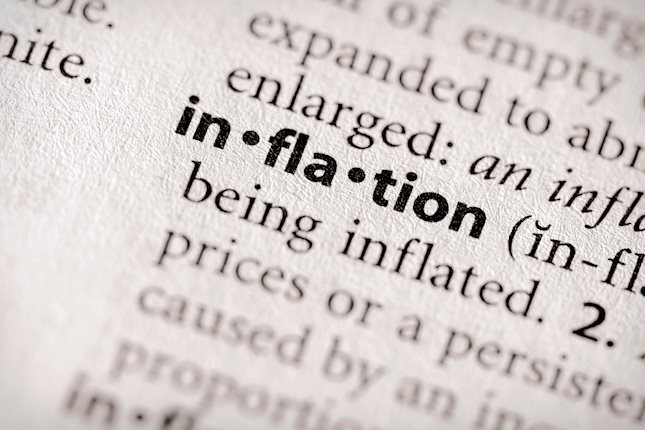- Pound Sterling comes under pressure amid uncertainty due to a holiday in US markets.
- Upbeat UK Retail Sales data indicate that the economy will come out of a recession.
- BoE policymakers warned about persistent service inflation.
The Pound Sterling (GBP) faces a sell-off in Monday’s early New York session against the US Dollar as the market mood turns downbeat. The GBP/USD pair retreats despite the Bank of England (BoE) is expected to hold interest rates at their current level for a longer period. Persistent price pressures in the United Kingdom economy due to stubborn service inflation, steady labor demand, and robust household spending would allow BoE policymakers to maintain a hawkish narrative for a longer period.
Last week, the surprisingly upbeat UK Retail Sales data indicated that the impact of higher interest rates by the BoE on consumer spending is fading. This indicates that the UK economy would come out of the technical recession sooner than previously thought. The UK economy entered a technical recession in the second half of 2023 as the BoE maintained interest rates higher to tame high inflation, which impacted consumer spending and business operations significantly.
The GBP/USD pair rises as the Pound Sterling tends to attract higher foreign inflows when the BoE maintains a hawkish stance for longer. Going forward, action in the Pound Sterling and the US Dollar will be guided by the preliminary S&P Global Manufacturing PMI for February.
Daily Digest Market Movers: Pound Sterling falls back while US Dollar recovers
- Pound Sterling falls from six-day high near 1.2620, although the United Kingdom’s persistent service inflation and robust Retail Sales data for January have pushed back expectations of early rate cuts by the Bank of England.
- Annual Retail Sales surprisingly rose by 0.7%, while investors anticipated a decline of 1.4%. In December, the economic data contracted sharply by 2.4%.
- The UK’s Office for National Statistics (ONS) reported that a 3.4% growth in food retail sales in January, prompted the rise in Retail Sales data.
- The upbeat Retail Sales data demonstrates a stubborn inflation outlook and allows the BoE to maintain interest rates higher in times of a high-inflation environment.
- Last week, BoE policymaker Katherine Mann and Chief Economist Huw Pill warned that persistent service inflation remains a major concern as a catalyst for price pressures.
- The latest inflation data showed that the headline and core Consumer Price Index (CPI) remained steady, while service sector inflation accelerated to 6.5% from 6.4% in December.
- The BoE generally takes the core and service inflation seriously when deliberating its monetary policy decisions.
- When asked about the UK economy’s vulnerable performance in the second half of 2023, Katherine Mann said the downturn was in line with higher expectations but she is focusing on forward economic indicators, which are indicating a persistent inflation outlook.
- Huw Pill said slowing headline inflation is good news for the central bank but tight labor market and service inflation are keeping price pressures persistent.
- Pill emphasized the need of easing inflation data for several months to convince policymakers that inflation will return sustainably to the desired target.
- Meanwhile, the US Dollar Index (DXY), which measures the Greenback’s value against six major currencies, rebounds from 104.10 in a holiday-shortened week.
- Trading volume is expected to remain light as United States markets will remain closed on Monday on account of Presidents’ Day.
- The USD Index rebounds as hotter US Producer Price Index (PPI) data have pushed back expectations of rate-cuts by the Federal Reserve (Fed) pre-June.
Technical Analysis: Pound Sterling drops from 1.2620
Pound Sterling faces sell-off while attempting to break above six-day high around 1.2620 as the market mood turns downbeat. The GBP/USD pair delivers a mean-reversion move to near the 50-day Exponential Moving Average (EMA), which trades around 1.2630, resulting in a “wait and watch” approach for market participants. The 200-day EMA near 1.2500 continues to support the Pound Sterling bulls.
The 14-period Relative Strength Index (RSI) oscillates in the 40.00-60.00 range, indicating consolidation ahead.
Risk sentiment FAQs
What do the terms"risk-on" and "risk-off" mean when referring to sentiment in financial markets?
In the world of financial jargon the two widely used terms “risk-on” and “risk off'' refer to the level of risk that investors are willing to stomach during the period referenced. In a “risk-on” market, investors are optimistic about the future and more willing to buy risky assets. In a “risk-off” market investors start to ‘play it safe’ because they are worried about the future, and therefore buy less risky assets that are more certain of bringing a return, even if it is relatively modest.
What are the key assets to track to understand risk sentiment dynamics?
Typically, during periods of “risk-on”, stock markets will rise, most commodities – except Gold – will also gain in value, since they benefit from a positive growth outlook. The currencies of nations that are heavy commodity exporters strengthen because of increased demand, and Cryptocurrencies rise. In a “risk-off” market, Bonds go up – especially major government Bonds – Gold shines, and safe-haven currencies such as the Japanese Yen, Swiss Franc and US Dollar all benefit.
Which currencies strengthen when sentiment is "risk-on"?
The Australian Dollar (AUD), the Canadian Dollar (CAD), the New Zealand Dollar (NZD) and minor FX like the Ruble (RUB) and the South African Rand (ZAR), all tend to rise in markets that are “risk-on”. This is because the economies of these currencies are heavily reliant on commodity exports for growth, and commodities tend to rise in price during risk-on periods. This is because investors foresee greater demand for raw materials in the future due to heightened economic activity.
Which currencies strengthen when sentiment is "risk-off"?
The major currencies that tend to rise during periods of “risk-off” are the US Dollar (USD), the Japanese Yen (JPY) and the Swiss Franc (CHF). The US Dollar, because it is the world’s reserve currency, and because in times of crisis investors buy US government debt, which is seen as safe because the largest economy in the world is unlikely to default. The Yen, from increased demand for Japanese government bonds, because a high proportion are held by domestic investors who are unlikely to dump them – even in a crisis. The Swiss Franc, because strict Swiss banking laws offer investors enhanced capital protection.
Information on these pages contains forward-looking statements that involve risks and uncertainties. Markets and instruments profiled on this page are for informational purposes only and should not in any way come across as a recommendation to buy or sell in these assets. You should do your own thorough research before making any investment decisions. FXStreet does not in any way guarantee that this information is free from mistakes, errors, or material misstatements. It also does not guarantee that this information is of a timely nature. Investing in Open Markets involves a great deal of risk, including the loss of all or a portion of your investment, as well as emotional distress. All risks, losses and costs associated with investing, including total loss of principal, are your responsibility. The views and opinions expressed in this article are those of the authors and do not necessarily reflect the official policy or position of FXStreet nor its advertisers. The author will not be held responsible for information that is found at the end of links posted on this page.
If not otherwise explicitly mentioned in the body of the article, at the time of writing, the author has no position in any stock mentioned in this article and no business relationship with any company mentioned. The author has not received compensation for writing this article, other than from FXStreet.
FXStreet and the author do not provide personalized recommendations. The author makes no representations as to the accuracy, completeness, or suitability of this information. FXStreet and the author will not be liable for any errors, omissions or any losses, injuries or damages arising from this information and its display or use. Errors and omissions excepted.
The author and FXStreet are not registered investment advisors and nothing in this article is intended to be investment advice.
Recommended content
Editors’ Picks

EUR/USD trades deep in red below 1.0300 after strong US jobs report
EUR/USD stays under bearish pressure and trades below 1.0300 in the American session on Friday. The US Dollar benefits from the upbeat jobs report, which showed an increase of 256,000 in Nonfarm Payrolls, and forces the pair to stay on the back foot heading into the weekend.

GBP/USD drops toward 1.2200 on broad USD demand
GBP/USD extends its weekly slide and trades at its weakest level since November 2023 below 1.2250. The data from the US showed that Nonfarm Payrolls rose by 256,000 in December, fuelling a US Dollar rally and weighing on the pair.

Gold ignores upbeat US data, approaches $2,700
Following a drop toward $2,660 with the immediate reaction to strong US employment data for December, Gold regained its traction and climbed towards $2,700. The risk-averse market atmosphere seems to be supporting XAU/USD despite renewed USD strength.

Sui bulls eyes for a new all-time high of $6.35
Sui price recovers most of its weekly losses and trades around $5.06 at the time of writing on Friday. On-chain metrics hint at a rally ahead as SUI’s long-to-short ratio reaches the highest level in over a month, and open interest is also rising.

Think ahead: Mixed inflation data
Core CPI data from the US next week could ease concerns about prolonged elevated inflation while in Central and Eastern Europe, inflation readings look set to remain high.

Best Forex Brokers with Low Spreads
VERIFIED Low spreads are crucial for reducing trading costs. Explore top Forex brokers offering competitive spreads and high leverage. Compare options for EUR/USD, GBP/USD, USD/JPY, and Gold.